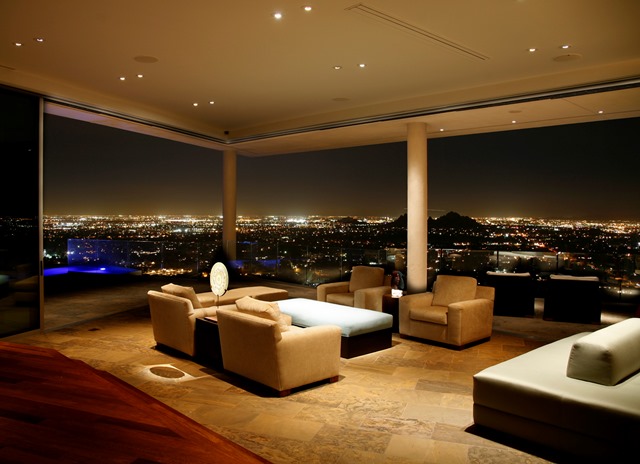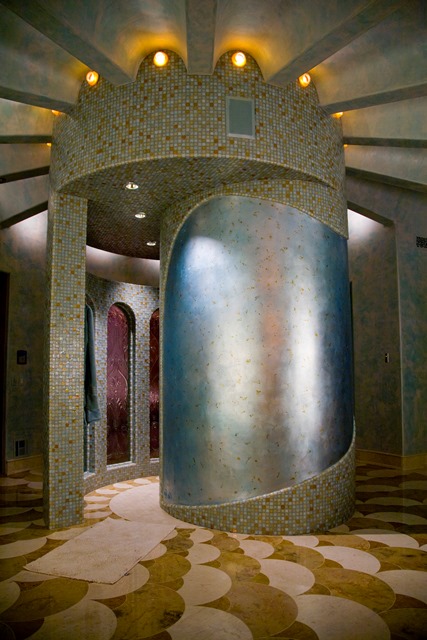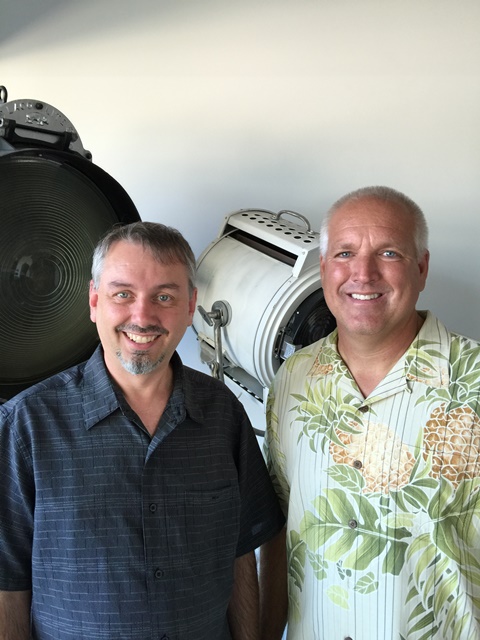
Creative Designs in Lighting, photo by Mark Greenawalt
Lighting enhances way-finding and safety in our homes, and it also enhances lives.

Creative Designs in Lighting, photo by Mark Greenawalt
At every juncture in the construction process, Arizona Structures, our Gilbert-based general contracting company, relies on trained professionals, craftsmen and artists. With lighting professionals, we depend on their technical expertise, design savvy –– even some magic. For 30 years, one of the premiere lighting professionals anywhere has been Walter Spitz’s Creative Designs in Lighting (CDL), Phoenix.
Lighting is both a science and an art, and we believe that professionally designed lighting is a critical part of what we call the Arizona Structures “Signature” build for new homes and renovations: the finest designs, craftsmen, materials and our quest for the exceptional.
These fine artisans at CDL transform architecture and landscapes through the magical qualities of light. The owners of retail spaces, office buildings, museums, restaurants and opera houses have realized for years the importance of not just good but exceptional lighting such as CDL provides.
On more than one occasion, we have been “stunned” to view what is obviously a home with a substantial investment in land, construction, design, furnishings, art, and yet the lighting is average, uninspired and mediocre. In contrast, we insist that our homeowners can easily control their interior environment, from bright and festive, to warm and soul enriching.
When Walter started his company, the primary focus was theatrical and event lighting, but his pioneering spirit quickly established CDL as a lighting design specialist in the residential and commercial fields.
He attributes much of the success to the advent of the Multifaceted Reflector light bulb, the MR16, available in multiple wattages, to vary brightness, and multiple beam spreads, to vary sizes of spot light, explains Mark Greenawalt, PE, LC, LEED BD+C, a CDL designer. “Walter used these lamps to ‘paint’ the architecture –– much as an artist uses paint to illustrate a canvas. Clients realized his art, and CDL flourished,” he says.
Books and guides are available on best lighting design practices, but knowing the right fixture, lamp and placement is an art form. The craft can be learned, but it may also take some natural talent and intuition. “When the aesthetic of a new architectural project matters, a professional lighting designer can help bring out the best in the final imagery,” Mark says.
Lighting does so much, if done correctly. For one: mood creation. “It’s easy to imagine the difference between a brightly lit cafeteria and dimly lit dining experience in a high-end restaurant. The architecture obviously plays a big part, but the lighting plays a critical part, too,” Greenawalt notes.
But lighting is more than aesthetics. Safety is always integral, and various codes establish minimum lighting levels. Building officials use light meters to verify these levels on commercial projects where the public safety is at risk. Other codes have been developed to conserve energy, and these require the lighting designer to minimize the wattages of lamps used and calculate the overall wattage to meet current limitations. This has been a key factor in the success of LED lamps, Greenawalt explains.
In addition to safety and energy, the lighting designer must also design within budget, which is very rarely unlimited.
Creative Designs has balanced all of these criteria on a variety of projects nationwide, including beautiful resorts, restaurants, office buildings and the homes of influential clients.

Mark Greenawalt and Tom Monte, photo by Dawn Monte
For public spaces, such as for the Marketplace at Desert Ridge in Phoenix and Tempe Marketplace, the CDL-designed lighting is colorful and dynamic and even incorporates “out-of-the-box” laser lights. The company’s landmark lighting includes the Frank Lloyd Wright spire at the Scottsdale Promenade and the fiber optic star fields on the viewing tower at Estrella Mountain Ranch in Goodyear.
Recent developments emphasize the effects of lighting on our biorhythms, and the CDL team also integrates these findings into their work. Sensors in the eye respond to the cooler color lights to keep us awake in daylight; the warm colors at night make it easier to sleep. A lighting designer also needs to understand the geometry of beam spreads, the calculations of light levels, or photometrics, and the more intangible concept of the psychology of how lighting makes us feel.
Through it all, the bottom line is making spaces beautiful, Greenawalt emphasizes. He notes, though, it is typically the interior designer, not the lighting designer, who selects and specifies the decorative light fixtures. The lighting designer illuminates the architecture.
The best designs include ambient lighting, accent lighting and decorative lights, that element of “sparkle.” The decorative lights complete the optimum lighting design, but it is the ambient lighting that defines the space with light and shadows, and the accent lighting provides the drama and leads the eye to the key features. “Balancing these three can be a challenge, but when done correctly,” Greenawalt says, “the architecture becomes beautiful art.”
With four decades of experience in building and renovation, Arizona Structures serves the East Valley, Arcadia, Scottsdale and Paradise Valley and has recently won a 2014 Best of Gilbert Award for General Contractor. This is the eighth of a 10-part series on your home and was assisted by David M. Brown (azwriter.com). Questions? Send them to Tom Monte, This e-mail address is being protected from spambots. You need JavaScript enabled to view it .